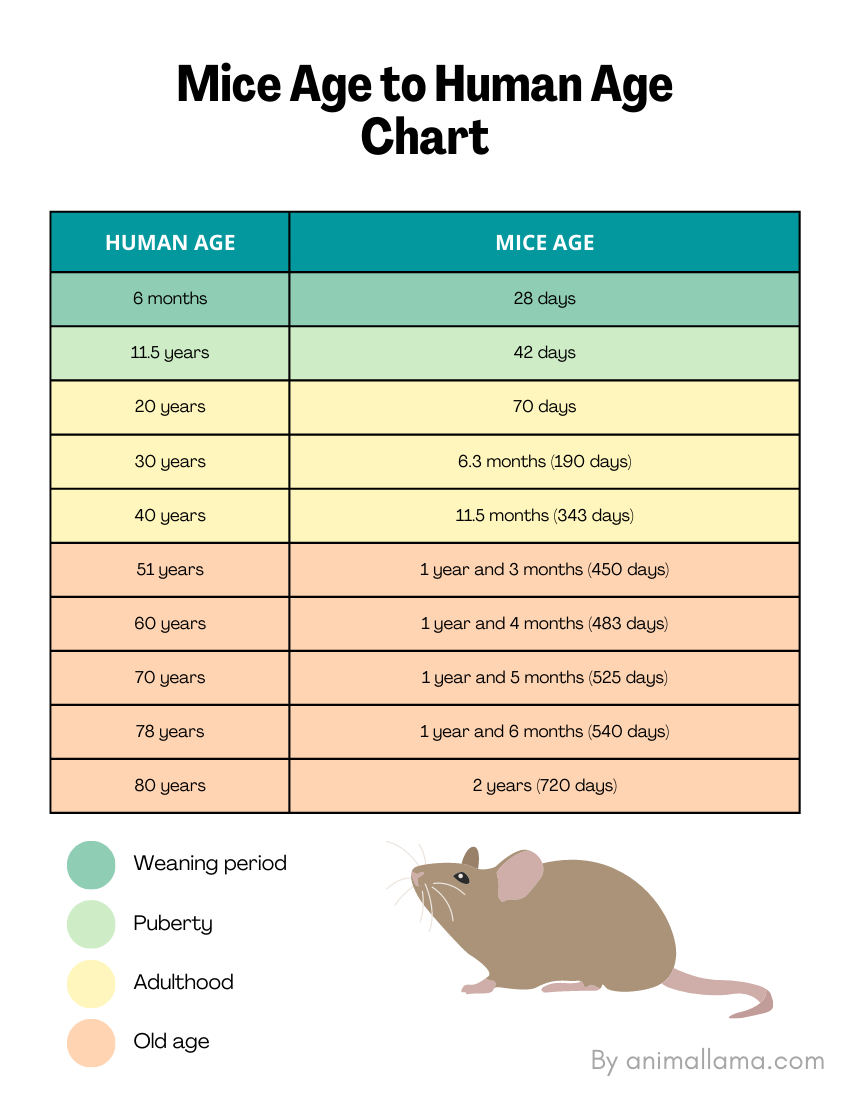Keeping pet mice comes with a major drawback – their short lifespan. On average, you can expect to enjoy the company of your pet mice for up to 2 years.
Adulthood for fancy mice begins as early as 2 months of age, with visible signs of old age typically appearing around 15-18 months.
Now, let’s delve into the typical lifespan of pet mice and how their age compares to human age!
Pet Mice Lifespan: How Long Do Pet Mice Live?
Pet mice, belonging to the Mus Musculus species, have a short lifespan compared to other domesticated rodents. They live an average of 12-24 months due to various health issues like respiratory infections and tumors.
Their lifespan can vary based on factors such as genetics. Factors like good breeding practices, a healthy diet, sufficient exercise, clean living conditions, and timely vet care can contribute to a longer life for pet mice.
Taking proper care of your pet mice can extend their lifespan, but genetics play a significant role in their longevity.
Mice Age to Human Age Chart
Ever wondered how your pet mice’s age correlates to human age? A 4-month-old mouse doesn’t equate to 4 months in human years. Each stage of a mouse’s life corresponds to a different number of human days due to their accelerated development.
Refer to the mice age to human age chart for an easy comparison of your pet mice’s age in human years.

For more printable resources, subscribe to our newsletter for access to our library!
Mice Life Stages Explained
Explore the different phases of a mouse’s life and how they relate to humans.
Weaning Period
At 3-4 weeks old, baby mice transition from maternal care to self-sufficiency. They become more active, grow fur, and develop teeth. This phase is akin to human babies starting solid food around 6 months.
Puberty
Mice reach puberty at 6 weeks, with females showing reproductive changes and males exhibiting maturity signs. It’s crucial to separate genders by 6-8 weeks to avoid unplanned litters.
Adulthood
Sexual maturity in mice occurs at 8-12 weeks. Adult mice reach their full weight, resembling human adulthood when growth plates fuse around 20 years.
Reproductive Senescence (Start of Old Age)
Reproductive decline sets in around 15 months in mice, similar to menopause in women at around 51 years.
Post-senescence Phase
Visible signs of old age in mice emerge around 18 months.
FAQs
It’s common for mice to cuddle or bury their deceased companion.
In rare cases, if your pet mice feel threatened, they may eat the body to avoid attracting predators. This behavior is a protective instinct.
Final Thoughts
Despite their short lifespan, pet mice bring immense joy during their time with us. Understanding their unique characteristics and needs can make the experience of having them as pets truly rewarding.
Sources:

